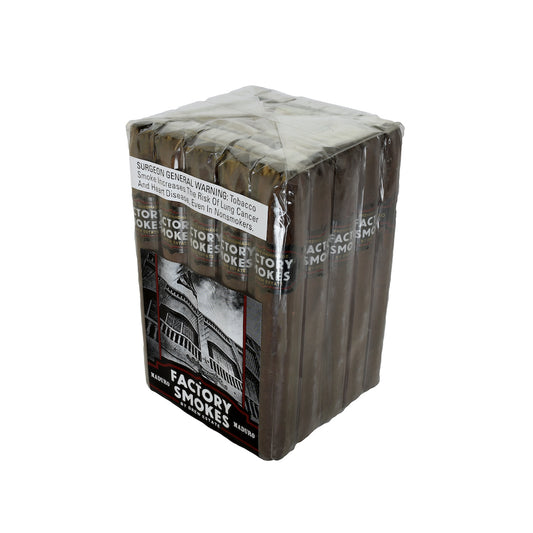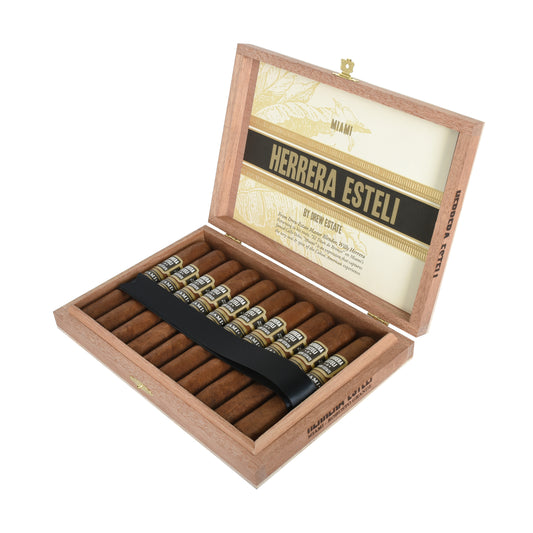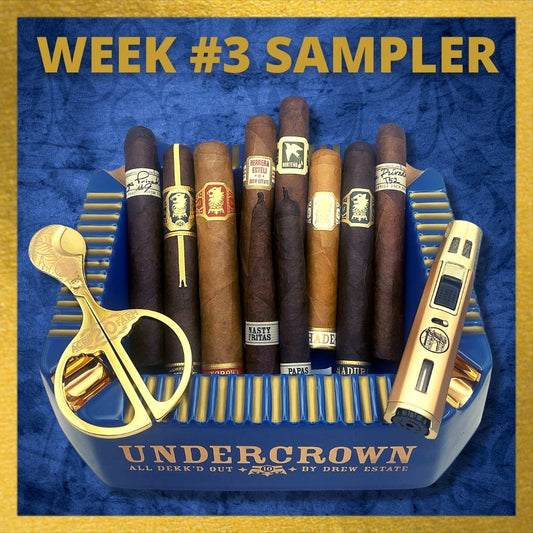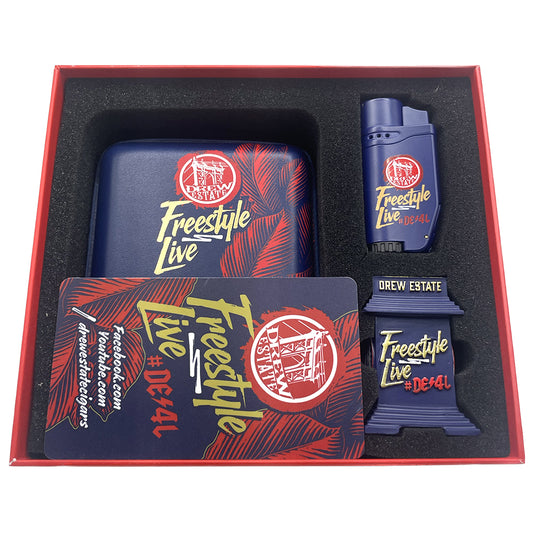Drew Estate Cigars has reshaped the cigar industry from a bold vision to a revolutionary brand. Their journey involves passion, innovation, and an unrelenting drive to create something different.
Launching a Cigar Legacy
Looking into Drew Estate Cigars' origin story reveals that it is just as unique as its product offering. Launched in 1996 in New York City, Drew Estate Cigars was founded by two college fraternity brothers, Jonathan Drew and Marvin Samel. While their story isn’t traditional, it is a case study that could be taught in business school.
In 1998, two years after the company’s founding, Jonathan Drew moved to Esteli, Nicaragua, bringing Drew Estate with him. It’s been there ever since. He moved there with very little money and no industry contacts—he didn’t even speak the native country language—and lived in a makeshift room he built above the rolling floor of the cigar factory.
Meanwhile, Marvin stayed back in New York to secure funding, working out of a small office in a New York City neighborhood called DUMBO (short for Down Under the Manhattan Bridge Overpass). While Jonathan figured out cigars in Nicaragua, Marvin was hustling in the streets of New York, borrowing money wherever he could and selling a cigar that didn’t even exist yet. Their teamwork and entrepreneurial drive would pay off.
Igniting Industry Disruption
A year later, Jonathan returned to New York with several blends that didn’t look or taste like anything the industry had ever seen before. With that, ACID cigars were born. Although it wasn’t yet on the radar of traditional cigar lovers, ACID cigars was a genuine hit with an entirely new market, combining bold, flavored cigars and wild art from up-and-coming DUMBO artists.
In 2000, Drew Estate launched Natural by Drew Estate, helping transition a new generation of infused smokers to something slightly more traditional. It was still unique because it had a slightly sweeter taste than typical cigars, but it was significantly more traditional than other infused cigars. The Natural was an early indicator of their emerging image as a premium and respected brand that would be solidified with the Liga Privada years later.
In the early 2000s, Drew Estate began building a name for itself. The La Vieja Habana was finally rereleased after some setbacks from its initial release in 1998, and by 2001, Forbes Magazine was listing Drew Estate alongside the likes of Apple and Harley Davidson.
Building an Empire
As 2004 rolled around, it was clear Drew Estate was growing fast and had to make some changes to keep up with the success and stay innovative. As a result, Drew Estate moved its headquarters to Miami, bringing on Steve Saka as president, one of the most respected cigar blenders.
With Saka at the helm, Drew Estate Cigars was led into a new era, evolving out of being a minor counter-culture brand and becoming one of the biggest companies in the cigar industry.
After a decade of hard work, Drew Estate Cigars had outgrown its first small factory. It needed a new factory that could keep up with the high demand, and that would symbolize its new position in the cigar industry. In 2006, it broke ground on the La Gran Fabrica Drew Estate.
In July 2007, the distinctly unique factory opened, adorned with art and representing a mix between traditional and subculture. The La Gran Fabrica Drew Estate is still one of the largest cigar factories in Nicaragua.
Dominating the Cigar World
The story of Drew Estate Cigars doesn’t end there. Today, the company has one of the most diverse offerings in the cigar industry, and most cigar appreciators have likely smoked a Drew Estate cigar without even knowing it.
Their infused brands like ACID, Tabak, and Deadwood pay homage to Drew Estate’s early days by utilizing wild and interesting flavors. Their infused line is so popular that the Acid Kuba Kuba is among the bestselling cigars in the world.
In 2007, they went against the industry trend of everyone making Puros and instead released the Liga Privada, a blend of four counties. In 2009, they followed up their success with the No. 9 by releasing the T52 blend. Ten years later, Liga Privada is considered one of the most premium cigars on the market, and its limited quantity ensures it’s a special find that stays fresh in people’s minds.
The Liga Privada evolved into the Undercrown line. Undercrown was created because the rollers were smoking too much Liga Privada and were asked to smoke less of it. The rollers tweaked the original blend, changing the primings and vintages and wrapping it in a San Andreas leaf. The resulting cigar was not a Liga but a rich and beautiful cigar in its own right.
In 2015, with the help of master blender Willy Herrera, the original blenders of the Undercrown created the Shade. Now a core line of Drew Estate Cigars with ratings of 90 or higher, Undercrown has found great success and was listed as one of the top cigars to smoke in 2017.
Expanding Through Collaborations
Despite its many successes, Drew Estate Cigars has not rested on its laurels but has engaged in joint ventures with other makers, including Joya de Nicaragua, the oldest cigar manufacturer in Nicaragua. It has also collaborated with big names from popular culture, such as Eminem for the Undercrown Shady.
Whatever Drew Estate Cigars does next, they’ve earned their place as one of the biggest names in cigars.
Shop our wide selection of Drew Estate Cigars!
Frequently Asked Questions
What makes Drew Estate cigars different from traditional cigars?
Drew Estate cigars stand out for their bold innovation and flavorful blends. Their infused lines like ACID Cigars use a proprietary process that infuses premium tobaccos with botanicals, essential oils, and herbs, resulting in flavor profiles unlike traditional cigars. They also offer premium non-infused lines such as Liga Privada and Undercrown, which are known for complexity and craftsmanship.
Can I buy a Drew Estate sampler to try different blends?
Absolutely. We offer curated Drew Estate sampler packs that include a variety of their most popular blends—from the infused ACID line to premium hand-rolled cigars like Liga Privada and Undercrown. Samplers are the best way to explore their wide range of styles without committing to a full box.
Are Drew Estate cigars suitable for beginners?
Yes. Many cigars in the Drew Estate lineup are well-suited for beginners. For example, the ACID Blondie and Deadwood Sweet Jane are flavorful, smooth, and easy to smoke without overwhelming strength. On the more traditional side, cigars like the Undercrown Shade offer a mild to medium-bodied profile that's approachable yet refined.
Which Drew Estate cigars are the most popular?
Some of the bestsellers include:
-
ACID Kuba Kuba – One of the top-selling infused cigars in the world
-
Deadwood Sweet Jane – Known for its bold, sweet flavor and iconic branding
-
Liga Privada No. 9 – A full-bodied, ultra-premium blend highly rated by enthusiasts
-
Undercrown Maduro & Shade – Affordable, high-quality alternatives to Liga Privada
Where are Drew Estate cigars made?
Drew Estate cigars are handcrafted at La Gran Fabrica Drew Estate in Estelí, Nicaragua, one of the largest and most artistic cigar factories in the world. The brand is deeply rooted in Nicaraguan cigar culture and uses a global blend of premium tobaccos.
Read Less
 Sold out
Sold out Sold out
Sold out Sold out
Sold out Sold out
Sold out Sold out
Sold out
















